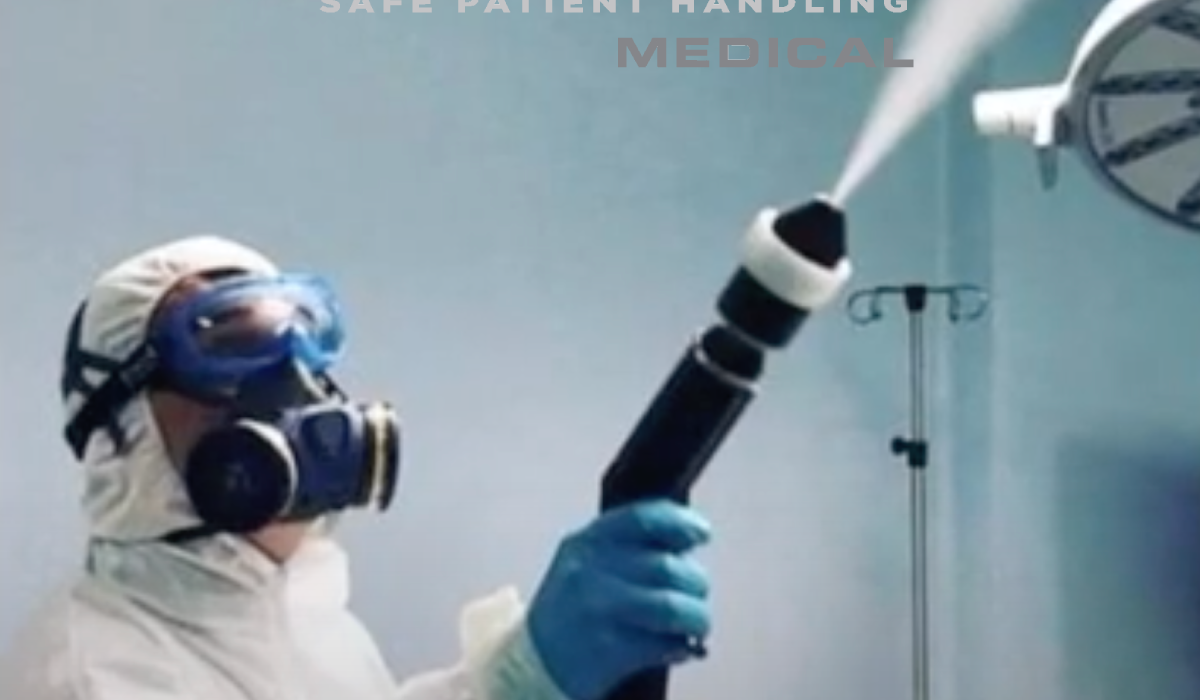Environmental Disinfection to Prevent HAIs
Each year, about 1.7 million Americans get an infection while hospitalized, and about 99,000 die. This makes hospital acquired infections (HAIs) the eighth leading cause of death in the United States. The cost to hospitals for treating or to prevent HAIs is estimated to be as high as $28 billion per year.
The most common HAIs are urinary tract infections, pneumonia, and bloodstream infections. However, any infection in a hospital setting can be considered an HAI. They can be caused by various microbes, including bacteria, viruses, and fungi. Many different microbes can cause HAIs in hospitals. The most common include MRSA (methicillin-resistant Staphylococcus aureus), C. diff (Clostridium deficile), CRE (Carbapenem-resistant Enterobacteriaceae), Pseudomonas aeruginosa, and norovirus. Each of these pathogens poses a severe risk to patients, and some are resistant to multiple antibiotics.
Understanding Environmental Disinfection
Environmental disinfection is destroying harmful microorganisms on surfaces to prevent the spread of infection. Disease causing microorganisms can be spread from one patient to another on environmental surfaces such as bed rails, door knobs, and countertops.
Various methods can be used for disinfection, including washing with soap and water, exposure to ultraviolet light, and using chemicals. Advanced disinfectants are a new generation of chemicals that are EPA approved and designed to be more effective against a wider range of microbes.
One type of disinfectant is hydrogen peroxide vapor, which is effective against various bacteria, fungi, and viruses. Another type of advanced disinfectant is ozone, which can penetrate surfaces more effectively than other chemicals and is also effective against a wide range of pathogens. In addition, advanced disinfectants are often less toxic than conventional chemicals, making them safer for use in healthcare settings.
One of the most difficult to kill bacteria is C. diff spores, which can live on surfaces for months. Oxydiff is a new advanced disinfectant that kills C. diff spores in 2 minutes, is EPA approved, and can be sprayed with a simple spray bottle, sprayed with an electrostatic sprayer, or used in a fogger. It is essential to use a product like Oxydiff that is effective against these tough bacteria and viruses to protect yourself, your family, and your community.
Environmental disinfection is critical to Prevent HAIs for several reasons
First, hospital surfaces are a common source of infection. The disease causing organisms can spread from one patient to another via contaminated surfaces, leading to severe and deadly infections. Second, many pathogens resist traditional disinfectants, making environmental disinfection a challenge. Multi-drug resistant organisms, or MDROs, are becoming increasingly common and pose a severe threat to patients.
Challenges Faced During Environmental Disinfection
One of the biggest challenges is finding effective disinfectants that can kill resistant disease causing organisms.
Another challenge is ensuring that all surfaces are properly disinfected. For environmental disinfection to be effective, all surfaces must be cleaned and disinfected regularly. This can be difficult in a busy hospital where staff is often short-staffed.
Hospitals also face the challenge of educating staff and patients about the importance of environmental disinfection in preventing infection.
Staff must be aware of the dangers posed by MDROs and how they can help prevent the spread of infection. Patients must also be educated about good hygiene practices and how they can help reduce the risk of infection.
CDC Guidelines
The Centers for Disease Control and Prevention (CDC) has published guidelines for hospital disinfection. These guidelines provide direction on how to properly disinfect surfaces to help prevent the spread of infection. Some of the key points from the CDC guidelines include:
- Surfaces should be cleaned with soap and water before they are disinfected.
- Disinfectants should be used according to the manufacturer’s instructions.
- Surfaces should be allowed to air dry or dried with a clean, lint-free cloth.
- Hospital staff should wear personal protective equipment (PPE) when cleaning and disinfecting surfaces.
- Patients should be encouraged to practice good hygiene, including handwashing and using alcohol-based hand sanitizers.
- Hospital rooms should be ventilated to help prevent the spread of infection.
The CDC guidelines are based on the best available evidence and provide a framework for hospital disinfection. However, each hospital is unique and some adaptations may be necessary to ensure that the CDC guidelines are met.
There are many different ways to disinfect surfaces, and it is essential to use a method that is effective against the type of bacteria or virus present. By taking steps to ensure a clean and disinfected environment, we can help prevent HAIs.

